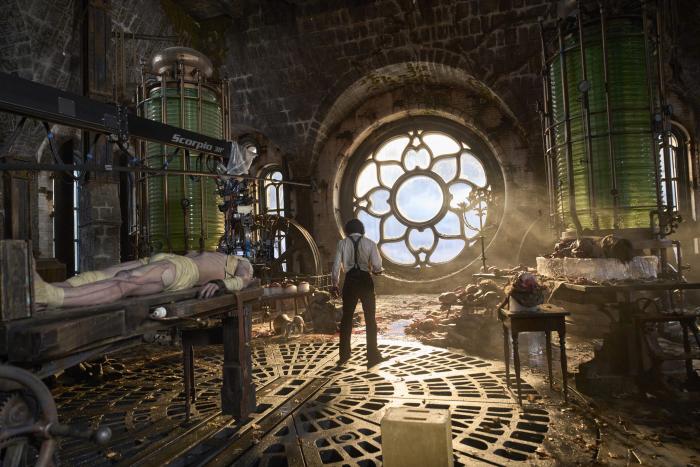By Lindsay Traves | Film | September 13, 2025

Fans of the notorious GDT know the man’s connection to the story of Frankenstein. He is synonymous with Frankenstein’s monster (I beg), which has followed him throughout his career, exhibits, appearances, and personal collections. Though the sixty-year-old filmmaker has shown no signs of slowing down, it seems he’s used his own golden age to make his quintessential film, Frankenstein — a collection of some of his best and worst impulses.
Those familiar with many adaptations of Mary Shelley’s novel might be surprised by this film’s closeness to the text. Del Toro splits his movie into two major parts, the second sneaking up on the audience with a deep first-person narrative from the monster himself. It treads closely to the source material, recounting his time hiding from humanity in a hovel and learning from the family he secretly observed.
In doing so, Del Toro spends much of the runtime exploring the monster’s humanity, something the writer/director is known for. He also asks a lot of the audience, who spend the first half of the nearly 160-minute film with Victor (Oscar Isaac) explaining what led the self-centered, lonely doctor to build a man from the parts of others. His desire to conquer death after losing his mother creates the kind of “monster” who would experiment on a tragic life. But this section indulges in carnival spectacle, and by the time the actual monster arrives, it overshadows the story that should have given him life.
There’s no subtlety here (a character literally tells Victor he’s the monster), which sometimes underscores how freely the movie engages with the text. References to Prometheus (named in the novel’s subtitle) are scattered throughout, and only a few land with the weight of the eagle feasting on Victor’s liver. Alongside this comes Del Toro’s theme park sensibility, rendering Victor and his lab as a lush, retro Halloween vision. Glowing green batteries and lightning strikes are accepted as gospel. Each visual detail—skies, smoke, lighting placement—feels deliberate, forming stunning tableaus that nod to classical art while remaining unmistakably Del Toro.
The cast sparkles as much as the scenery. Mia Goth’s Elizabeth anchors the tale as a sympathetic woman exhausted by the whims of men. Her relationships with the leads don’t spark much electricity, but her empathy for the monster deepens the narrative. Jacob Elordi embodies the monster with a commanding presence and size that make you consider him, and Bill Skarsgård, worthy descendants of Doug Jones.
Frankenstein’s monster has been adapted in pop culture like a biblical parable, a rich foundation for countless stories: the berserk feminist fable Poor Things, the slappy horror comedy Patchwork, and innumerable versions across genres. Del Toro’s take is a “back to basics” retelling, an opportunity to adapt a story he deeply loves with his signature style. Though not unique to this film, his career has often shown the humanity in monsters and the monstrosity in humans — from The Shape of Water to Pan’s Labyrinth. That theme culminates here. This is Guillermo Del Toro unchained, and for better or worse, he has unleashed every impulse to make his version of the story that started it all.
Frankenstein played the Toronto International Film Festival and will hit select theaters October 17, 2025 and Netflix on November 7, 2025